Every 4th of July, Stadium of Fire thrills and excites Utahns with hundreds of dancing pre-teens performers, hit rock or country music singers, flyovers, skydiving aerialists, and thrilling fireworks. I’ve attended several events over the years. So, the routine was expected. A headlining country or rock music artists draws the crowds. The event is streamed live to our armed forces around the world. Dance studios from all over the state put on their biggest show of the year with hundreds of pre-teenage girls dancing around the field. All coming together with a massive 20-30 minutes firework show finale. All to celebrate the birth of the America.
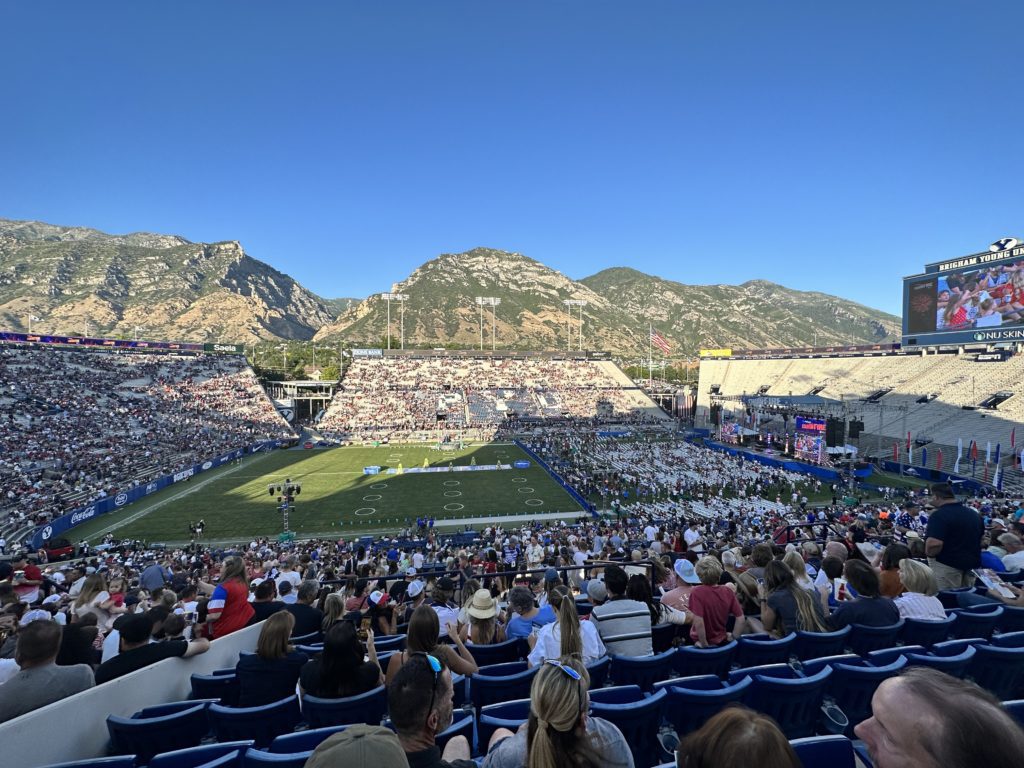
UPDATE: A few days after I released this blog post, my friends over at Hamina did a webinar talking specifically about designing Wifi for Stadiums. It’s a good watch that I highly recommend!
This year, I had a different perspective all due to having a friend that is one of the head Wifi engineers for the venue owned by Brigham Young University. There was something special this year in addition to BYU joining a new Conference becoming official that morning on July 1st at midnight. A brand new Wifi network.
I arrived early to the stadium but had to wait for others from my group to arrive before entering the gates. I watched as fan after teenage performer after local celebrity entered through the ticketing system. It got me to thinking about a past conversation. As happens with many who get into Wifi or Cellular, you start noticing radios. I was talking to my cousin, who has season tickets to the BYU Football games, who said the Wifi has always “Sucked” at Lavell Edwards Stadium. I decided it was time to do some investigation of my own. I quickly found my first AP.
Extreme Networks Upgrade
At WLPC Phoenix in February, I had chatted with my buddy, Doug Hales, about eduroam and their Wifi network around Brigham Young University and their various campuses in other locations. He had mentioned that they were going to be upgrading the Lavell Edwards Stadium Wifi this summer. While being Aruba APs elsewhere around campus, the Stadium was going to be an Extreme Networks site.

Extreme Networks is known for their stadium and sporting event partnerships. You may have recognized that there was another massive sporting event in Phoenix in February 2023, a couple days after and a few miles away from WLPC Phoenix, The Super Bowl. Extreme Networks partnered with the NFL to provide that stadium with Wifi. They are known to provide a quality experience, and the Wifi worked well during that event.
The nerdy brain of mine decided my personal goal was to test out this network throughout the event. I’ve been to too many events that are too overly saturated and poorly designed. I’ve heard there are solutions to this issue, and I was excited to see it in action. I messaged Doug and luckily he was onsite making sure things were working, albeit with a few hiccups. This event was the maiden voyage for the new Extreme APs, before other events return later this year.
Ticketing and Security
The first experience with the venue Wifi is as you enter the stadium from the parking lot. As with any major event, public safety is paramount, and this event was no exception. As I mentioned, BYU that morning had officially joined a new Conference, bringing an even higher level of requirements for entry into events. The staff, it seemed, were testing some new equipment scanners that seemed to find if attendees were possibly carrying something larger than a cellphone or wallet.
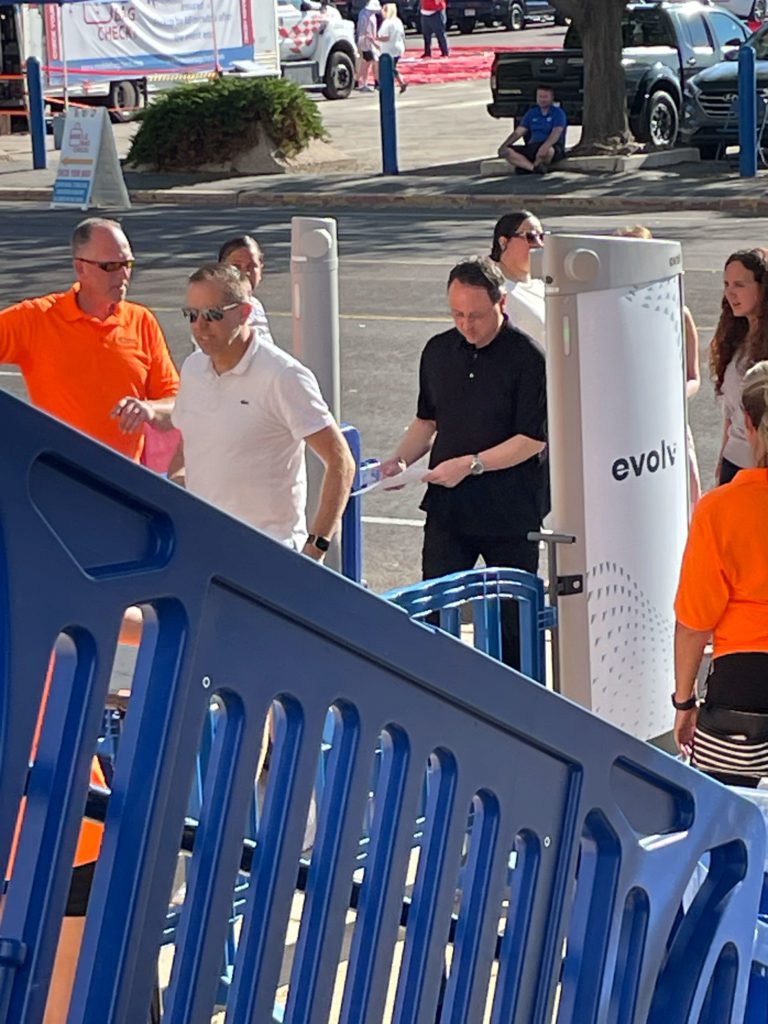
I’m guessing that those scanners were operating on a separate Wifi network than the venue Wifi, but utilizing the same channels as all the other gear in the stadium. I watched a 3rd Party Contractor, a company I have personally worked with, that was on site making sure the devices worked as expected. My guess was those were using the EXPR04133 and EXPR04138 SSIDs from my screenshot below. I only saw those networks at the entry way, so the scanners were most like using those SSIDs.
They also have their guest Wifi network available at the gate. Most tickets are on people’s phones with eTickets or Apple Wallett. Many fans don’t access their tickets until they arrive at the gate. Providing connectivity at the gate is important to improve entry times for patrons.

I also noticed the TiCkEtS SSID and wondered what that was used for… Not applying any security through obscurity there ha.

Those devices are the perfect use case for CBRS and Private Cellular. Why would a venue put such critical infrastructure on the same spectrum as all the guests in the venue?
The NFL has famously moved their Coaches communication systems to CBRS. If the guest network is having problems, it’s very probably the Ticketing system and Security Scanners are going to be suffering as well. Wifi operates with a best effort scheduling. Every client that joins has to contend for airtime and affects the performance of every other client. For anyone new to Wifi that first learns how it works, it is often asked how we even get data to work on Wifi.
CBRS on the other hand is scheduled and a better usage of the spectrum. All communication is controlled and scheduled. I can guarantee an application is provided the right amount of airtime. There is no contending for airtime with guest devices. The devices have their own dedicated carpool lane on the freeway, that others cannot join.
The current issue is that these devices do not have cellular radios built into them yet. This needs to change. There is also the argument that cellular modems are more expensive to put into the devices, but these are not your cheap home IOT devices. Let’s get cellular modems built into these handheld ticket scanners and security sensors ASAP! Zebra has handhelds with built in Cellular modems that support CBRS. If I was in charge of one of these venues and had an upgrade path, I’d be looking at a tandem CBRS network. Our teams need a load taken off of their plate so they can focus on the guest network issues and not worry about the network for getting patrons into the venue. Separate the use cases!
As I was awaiting entry and watching the ticket scanning and security sensors, I decided to test the Wifi. So, I connected to the BYU Cougars Wifi SSID and pulled up the Ookla Speedtest.net app on my iPhone 14 Pro. I carry around two phones at all times. My iPhone 14 Pro is running Google Fi (T-Mobile) and is my personal account. My second phone is my work phone, running an iPhone 12 Pro on Verizon. I was expecting at most 10-20mbps.. No way did I expect to get over a 100mbps up and down. I was shocked!! I messaged my buddy to show off the experience and sent him this screenshot.

Pre-Show Experience
Once we entered the stadium, I expected the experience to get worse. Thousands of people awaiting the show playing on their phones had to affect the Wifi network… That wasn’t my experience. Doug came down from his booth to chat about their network for a few minutes. I connected to the open BYU Cougars Wifi SSID set aside for anyone joining as a guest.
They also had implemented a Hotspot 2.0 Passpoint network in partnership with Verizon, called VerizonWifiAccess. Anyone with a Verizon phone should offload from the cellular to the Wifi network. That could be a good thing or it could be a big issue.
Since my iPhone 12 Pro is running on Verizon, I was curious to see if Passpoint worked. I quickly pulled out my Verizon iPhone 12 Pro and sure enough, it was automatically connected to that VerizonWifiAccess SSID without any interaction on my part. I know some Wi-Fi engineers don’t like with this happening without user interaction. If the Wifi network is designed correctly, this will give end users a better experience.
When I returned to my seats, I asked my cousin and other family members that were on Verizon to check their phones and they were already automatically connected to the VerizonWifiAccess SSID. That was a good sign but an interesting one.
That meant even more devices were connecting the Stadium’s Wifi network than I had expected. Anyone with Verizon was likely on the Verizon Wifi taking a load off the cellular network. That was really cool to see. I think Passpoint and OpenRoaming are going to be big solutions in the future to help prevent connectivity issues. That will require venues to design their networks better though.
Neutral host opportunities will also be a future option, but I think Passpoint will be used more at large venues. I think most large venues will save the Private Cellular Bands like CBRS for additional IOT connectivity than for connecting guests.
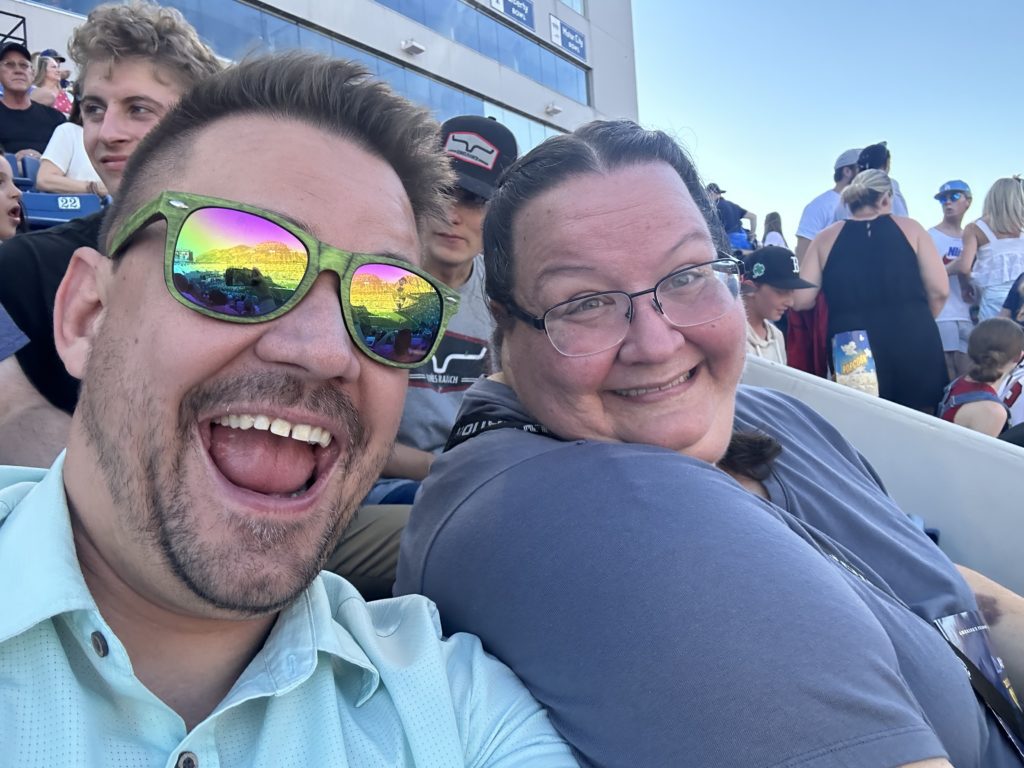
Show Time
Chatting with Doug, he said that the spectrum was messy until everyone was in their seats. The design relies on the idea that the stadium is going to be filled by people. Our bodies are just bags of water that do something interesting, the water absorbs wireless signals. So designing a stadium wifi network relies on the idea that we are going to have people every few feet helping to kill the Wifi signal. That allows us to build a channel reuse plan and reduce other network interference.
The show started off with a bang. A F-35 Squadron of Fighters from nearby Hill Air Force Base did the traditional fly over to the sound of cheering fans and mortor explosions.
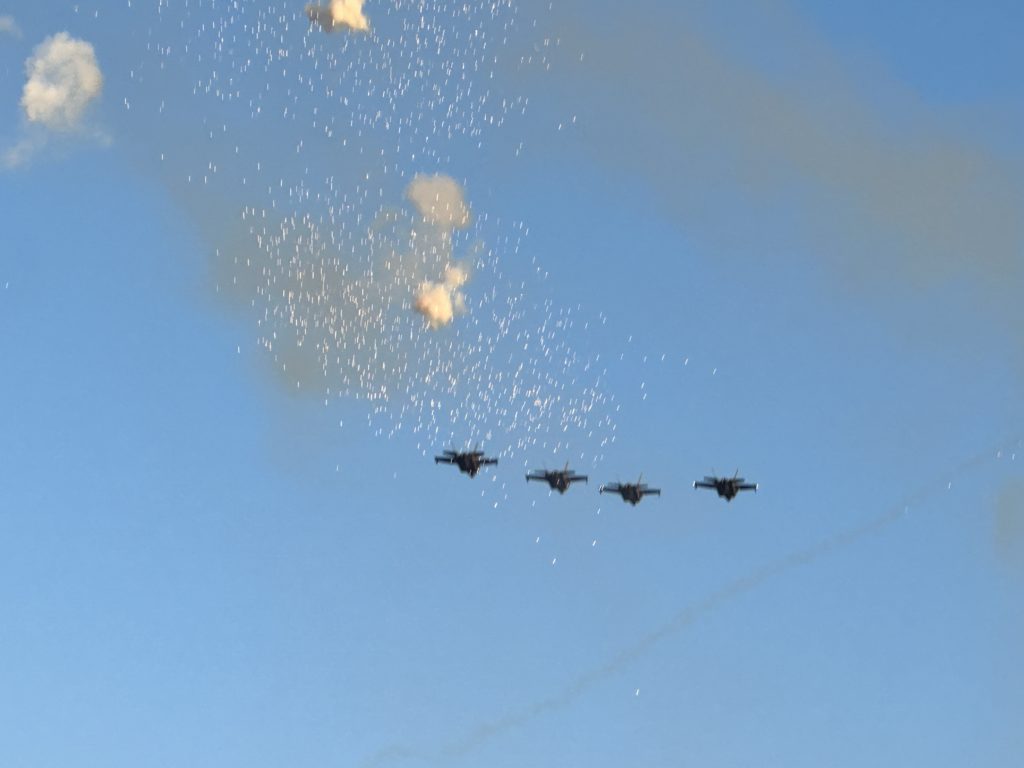
After the excitement of explosions and jets, I decided to see how the Wifi was performing. I installed the Apple Diagnostics Profile with the Shortcut from Dan Jones on both my iPhones.
I pulled up how the BYU Cougars Wifi SSID was performing in the Diagnostics menu. My signal strength was right where you wanted it to be, -65dBm. I was on Channel 52 with an Open network. Connectivity to the Gateway and Internet was in the red, but those numbers aren’t terrible. All around the Wifi was operating as expected for the Guest network.

Next was to check on how the VerizonWifiAccess network was performing. It was a similar experience, especially since the AP for both SSIDs was located under the seats two chairs over from me under my sister-in-law. The main difference was obviously the Security Type since Passpoint uses WPA2-Enterprise security. The connectivity section was a little higher but that fluctuates throughout the connection as the Wifi adjusts. So, its not unexpected.

The Big Hiccup
After the flyover, we had the expected welcome and honoring of our veterans. They honored some of the last surviving members of the military who served during World War II. Veterans who served during the Battle of the Bulge and one of the last two surviving members of the crew of the USS Arizona, who sadly passed away a few weeks before the event.
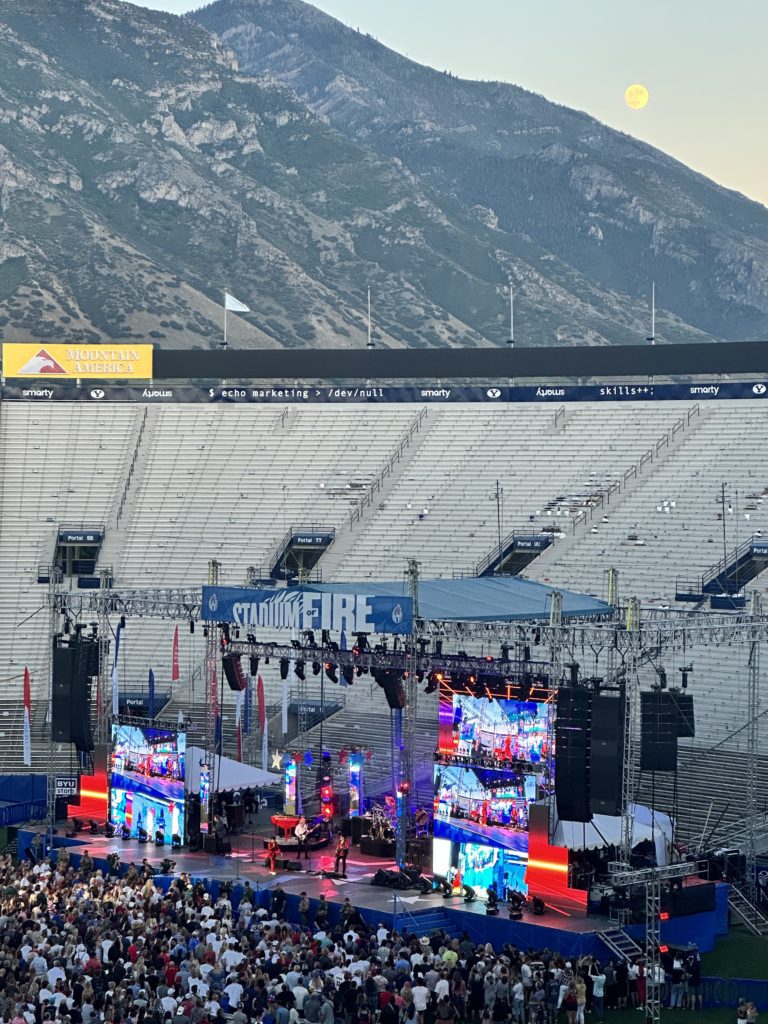
There was only one time throughout the night that as an end user of the network where I noticed an issue. One of the sponsors of the event was Chick-Fil-A. As a gift to everyone in attendance, they announced that everyone was receiving some free Chick-Fil-A Nuggets. As soon as they made that announcement, EVERYONE suddenly opened their phones to redeem the reward, ALL AT THE SAME TIME.
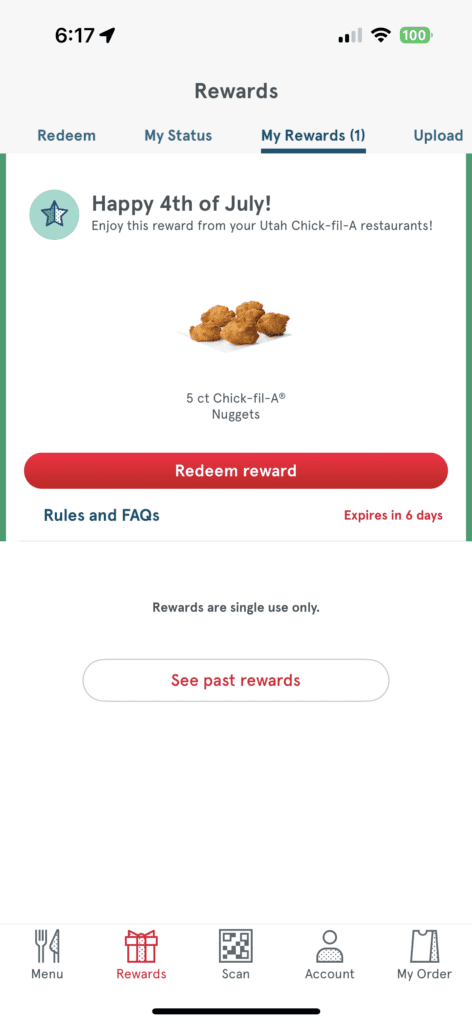
That influx of users brought the network to a crawl. My iPhone 14 Pro was working okay albeit slow on the guest Wifi. My cousin and sister-in-law sitting next to me connected with Verizon were struggling to load the page. It would just say the “Rewards are Loading”.. I told them to turn off the Wifi and the page loaded as expected. They were able to receive their free chicken using the cellular network.
Even on the best designed Wifi networks, if you have an event like that with a massive increase in users, the spectrum is still your limit. So, there’s little you can do with Wifi in that environment to protect against that issue. Cellular can help but that doesn’t solve it entirely either. I wish I had a Spectrum Analyzer during that moment to see how much traffic on the channels was being used.
Network Design
Throughout the night, especially when first entering the venue, I quickly noticed where the APs were located. Every 40 feet or so and couple rows there was an AP situated underneath the seats. As I said, the closed AP to my seat was about 7 feet away.
Doug said those APs have Omni-Directional Antennas and from my Diagnostics testing they are using 20MHz channels as expected in a high density design. People’s bodies are used to help limit the reach of the APs from interfering with a neighbor AP. He also said those APs are 6GHz capable for when the FCC authorizes the use of AFC. When they are able to use AFC and turn on the 6GHz radios, the Wifi network will improve the connectivity in the stadium even more. Users will probably see even higher speeds and lower latency.

This event has something cool but also out of the ordinary. Since the main even was a concert and fireworks, they had the south end of the stadium closed off to the audience. The stage was obviously blocking the view from those seats. The bigger reason was that is where they had a lot of the fireworks ready to launch for the big show.
From a Wifi perspective, it showed off something kind of cool. Since no one was allowed in that area, it showed off the APs. Each Extreme Networks AP has a bright white LED light on top. Looking over at that section of seats, you can see the lines of APs every few rows across the whole section as you can see in the photo below.
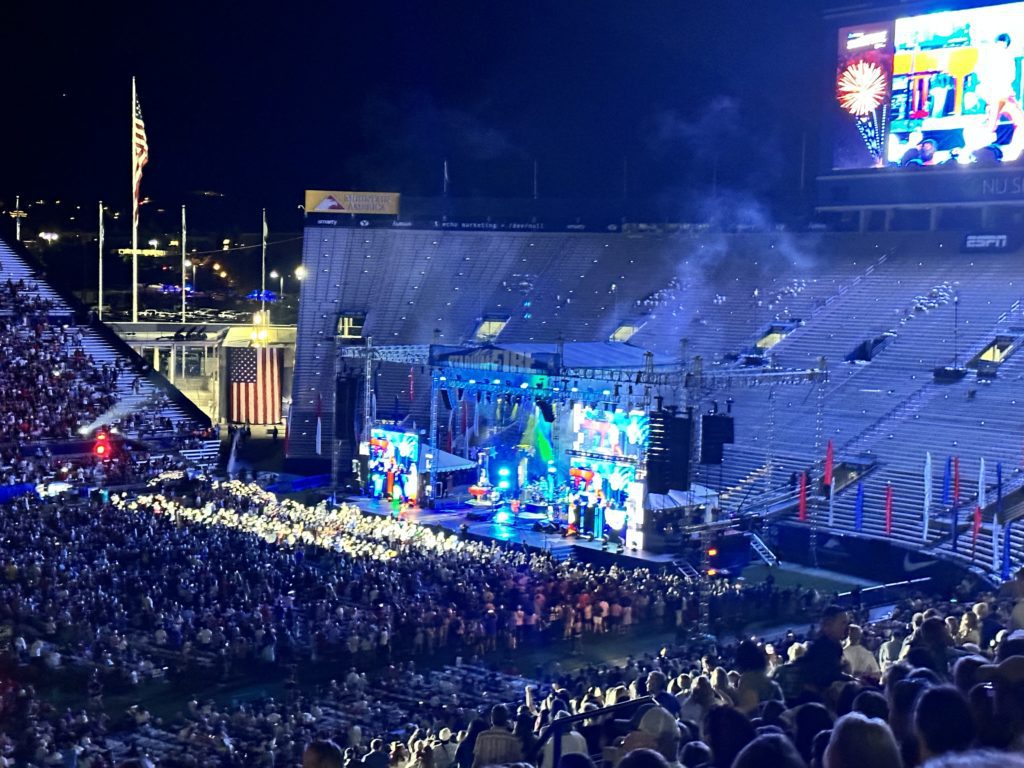
With so many APs around the stadium, you’d expect to see a crazy number of APs. Doug sent me this screenshot from Wifi Explorer Pro from his location in his booth. Their design uses every available 20MHz channel. If no one was standing in front of the APs, a client would see every single AP in the entire stadium. The people help limit the visible APs but it doesn’t solve the problem.

If I saw that many APs at a venue, I would expect the spectrum to be saturated with just Beacons from every visible AP. Because we are relying on people to help attenuate the signal, the system works. In my classes from CWNP and ECSE, the teacher often uses the example that one AP would be visible across a stadium. This shows that to be true. Every AP was visible, but people helped limit the propagation and interference.
Overall Experience
Throughout the night, I continued to test with Ookla’s Speedtest.net app on my iPhones. I never once had an experience worse that 100mbps, but had up to over 150mbps down at one point.

Doug sent me this screenshot, that I use by permission, of how much traffic was used on the Wifi network. These numbers are insane. It looks like peaks at around 16,000 clients connected to the Wifi during the event and that was only 3/4ths of the stadium being filled. The spike on the Flows column was at the moment when they announced the Chick-Fil-A rewards for the entire audience. Any stadium with that much of an influx of users simultaneously using the network would struggle, especially hitting the same servers.

The Journey
At the end of the event, I was excited to learn more about stadium Wifi networks. I’m grateful to Doug Hales for sharing the data with me. The ability to use Wifi properly in a stadium is a hot topic right now. There are many Wifi engineers who are interested in learning about how to design these networks. I hope more people test the networks and the venues share how the design was implemented. We are all learning together.
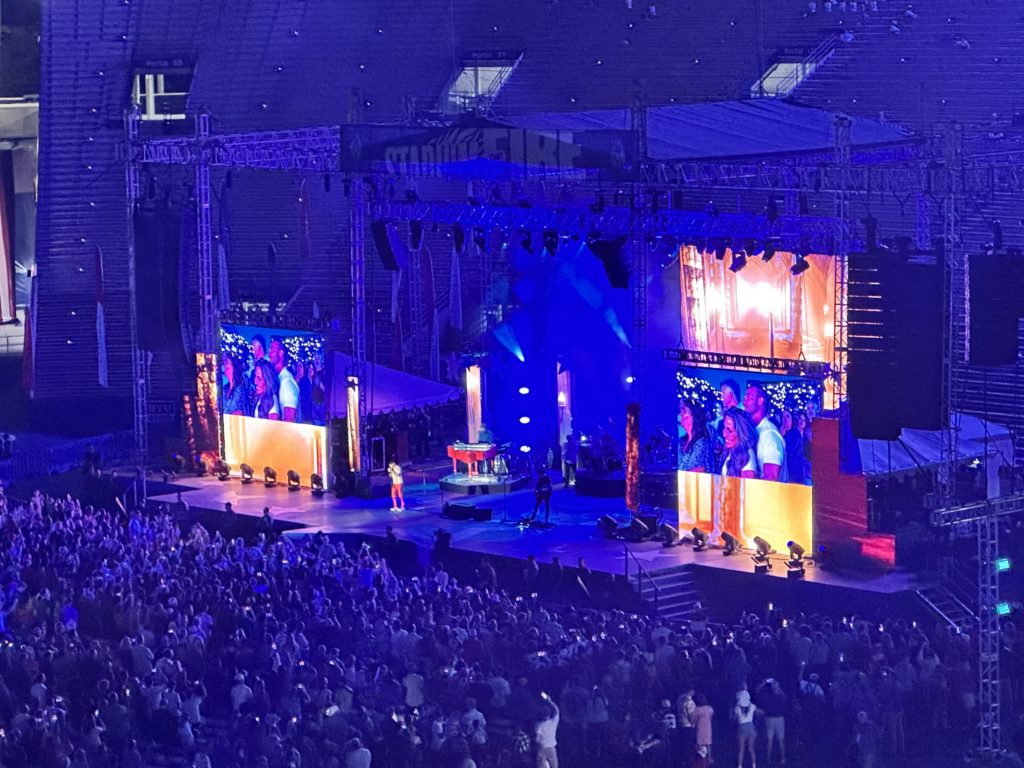
The show’s finale went off with explosion of fireworks, both figuratively and literally. Journey got the crowd dancing to Don’t Stop Believing and Faithfully. The skies were lit up with reds, blues, whites, greens, purples, and yellows commemorating the birth of America. In symbolic fashion, the inaugural celebratory event of BYU’s entry into the Big XII, their brand new Extreme Network Stadium Wifi, and another successful Stadium of Fire ended with a bang.
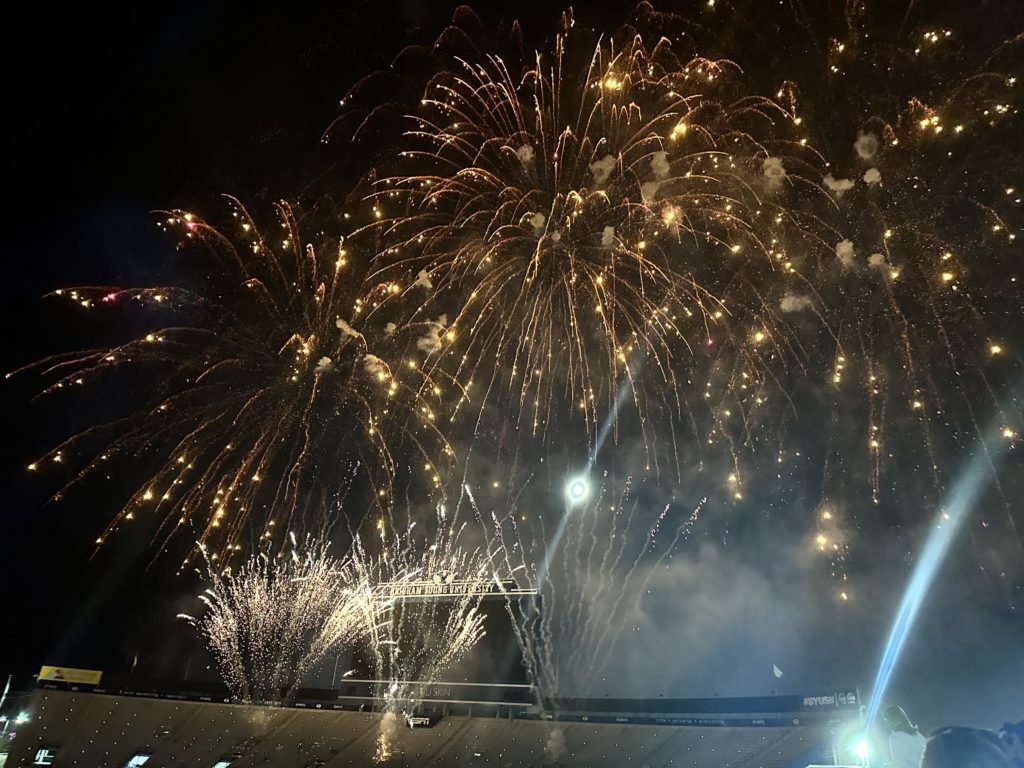
It was a privilege to be a witness to all of it, even if the Wifi upgrade went largely unnoticed. It just worked as should be expected! I countered my cousin’s statement that the Wifi always “sucks” with a it used to suck! Well done Doug and the BYU IT Department!


